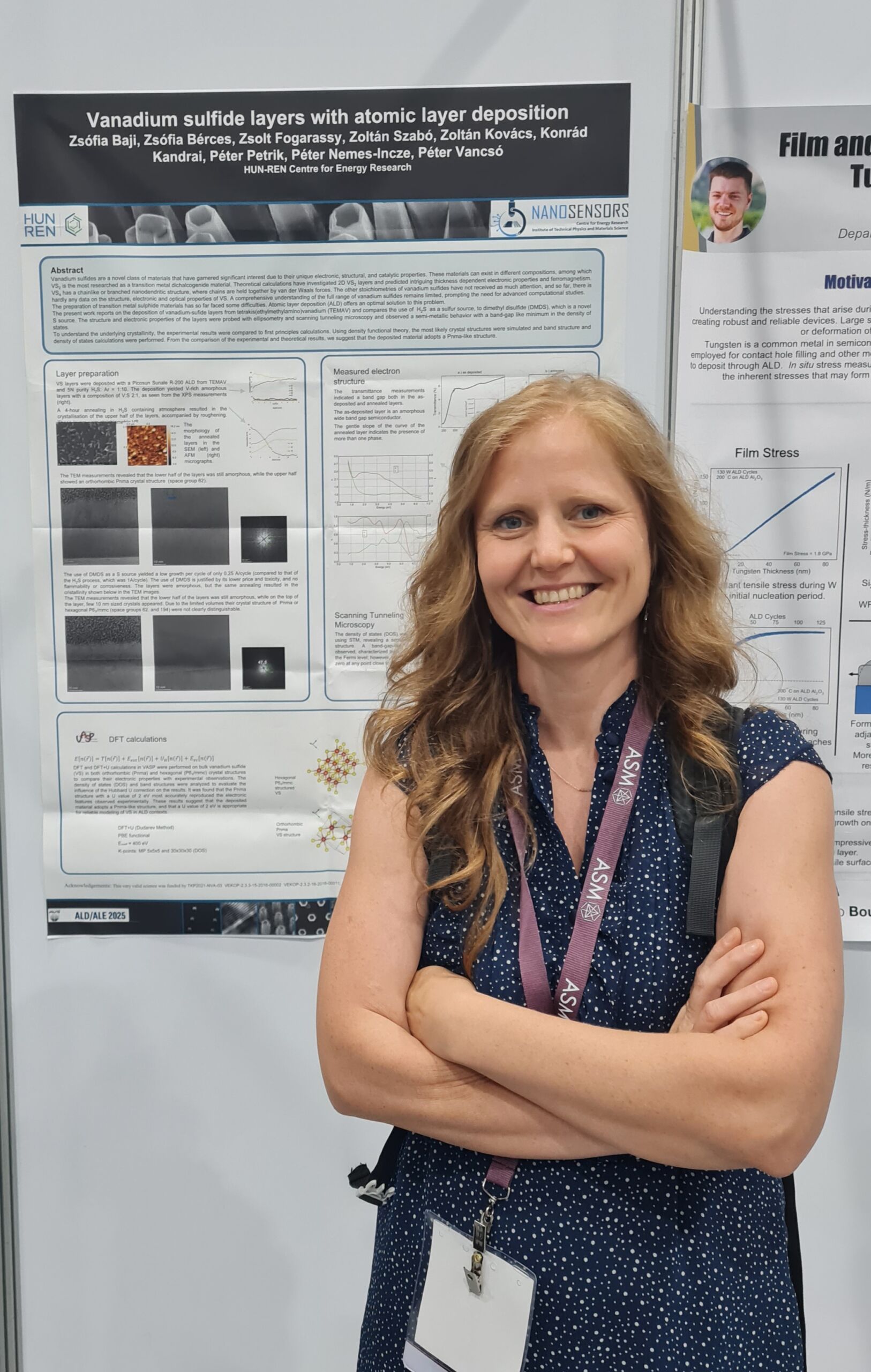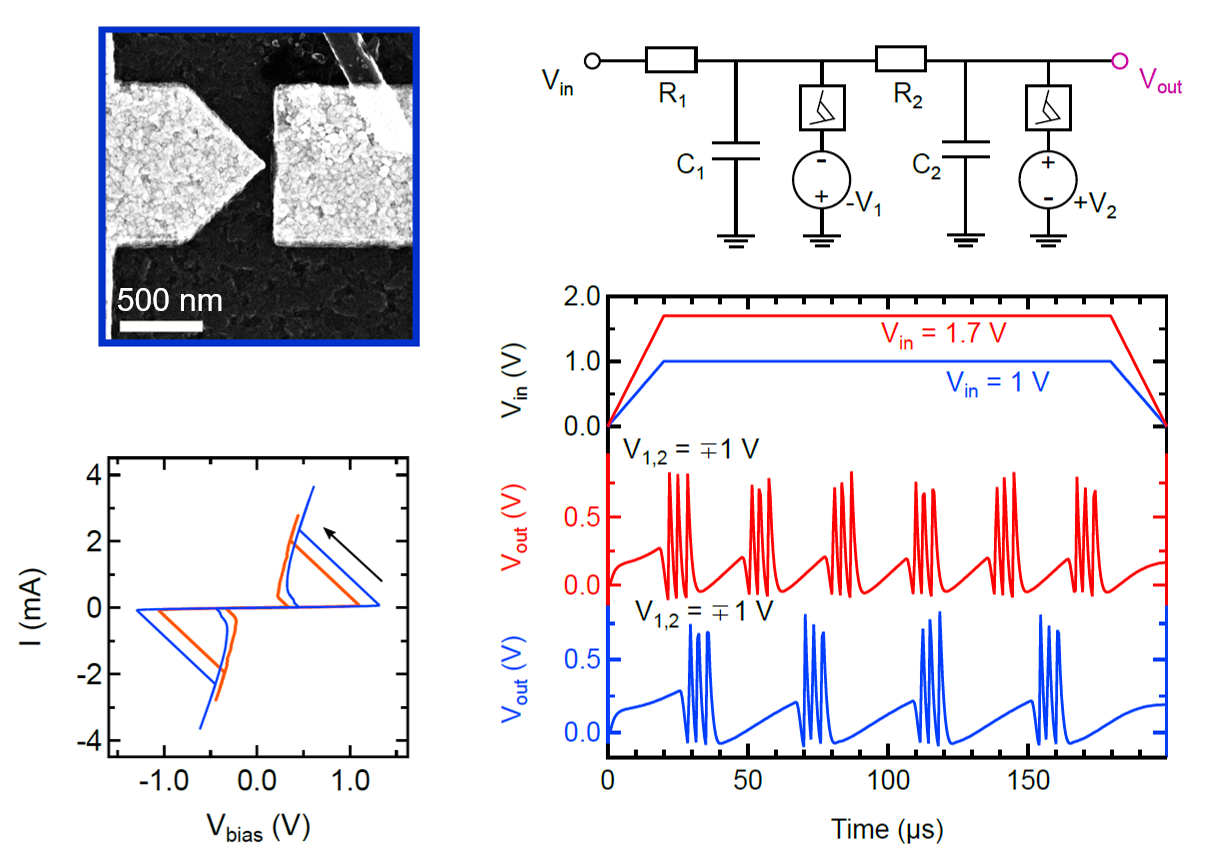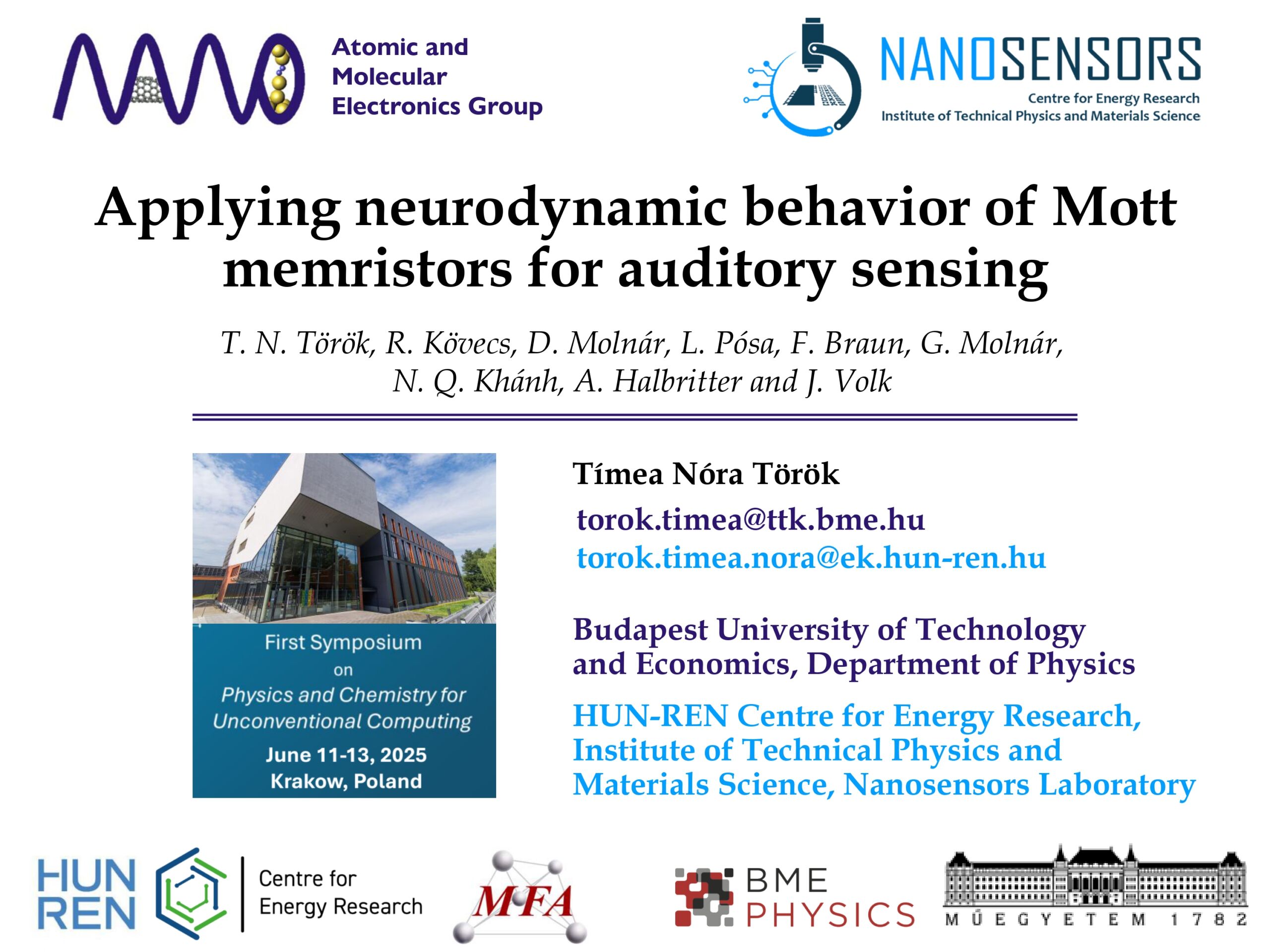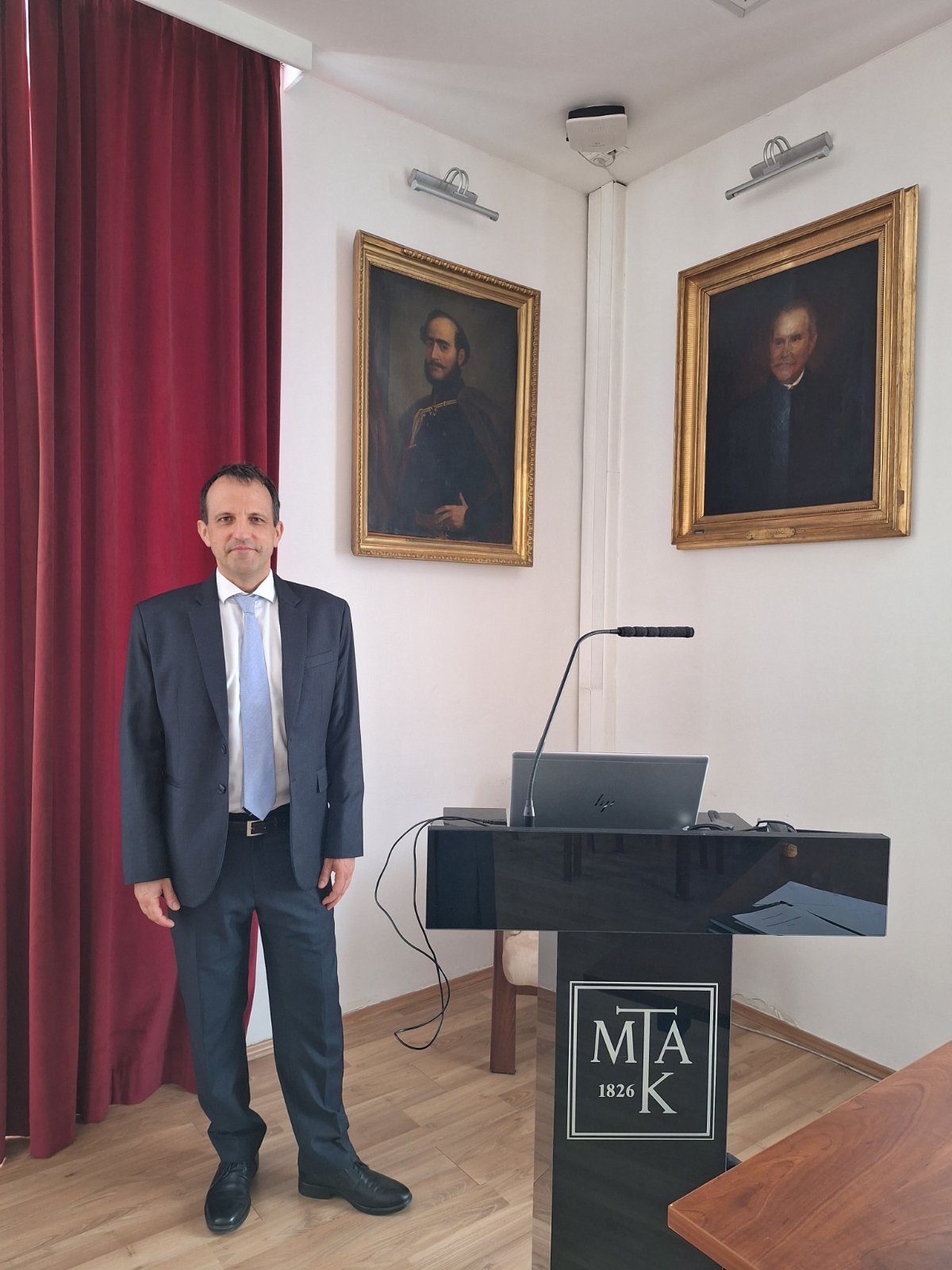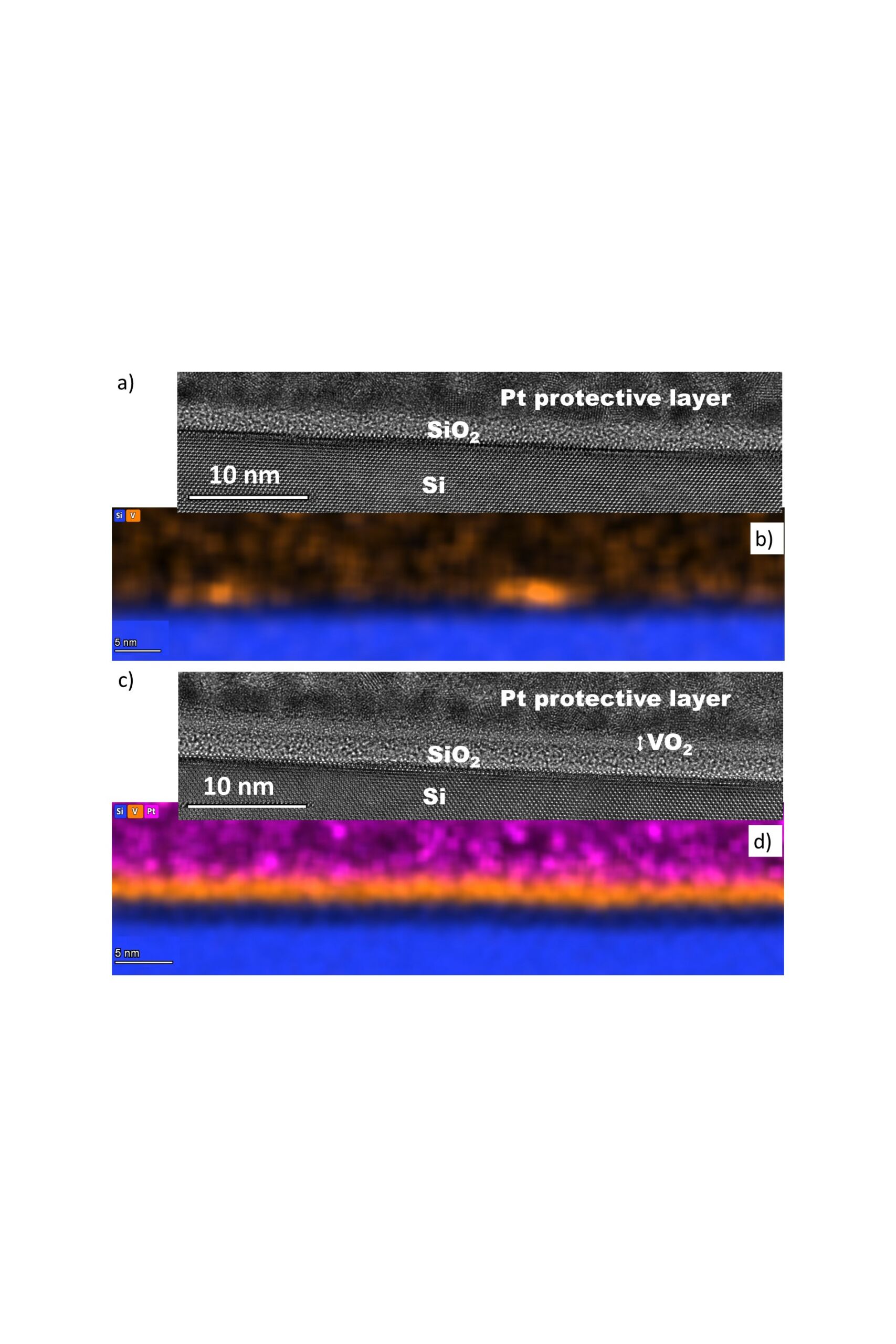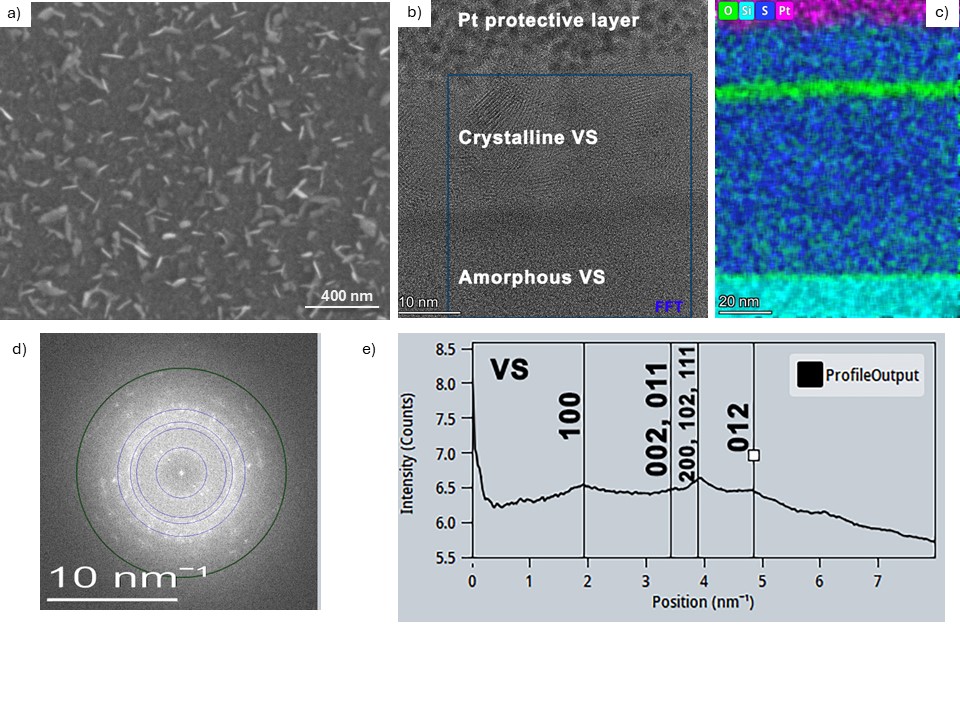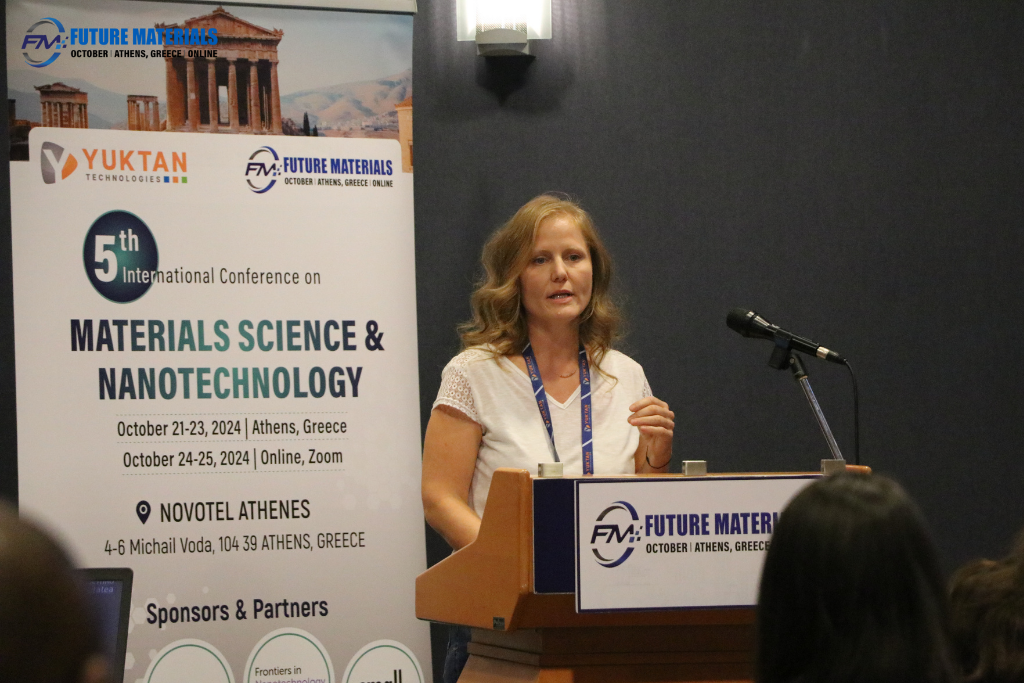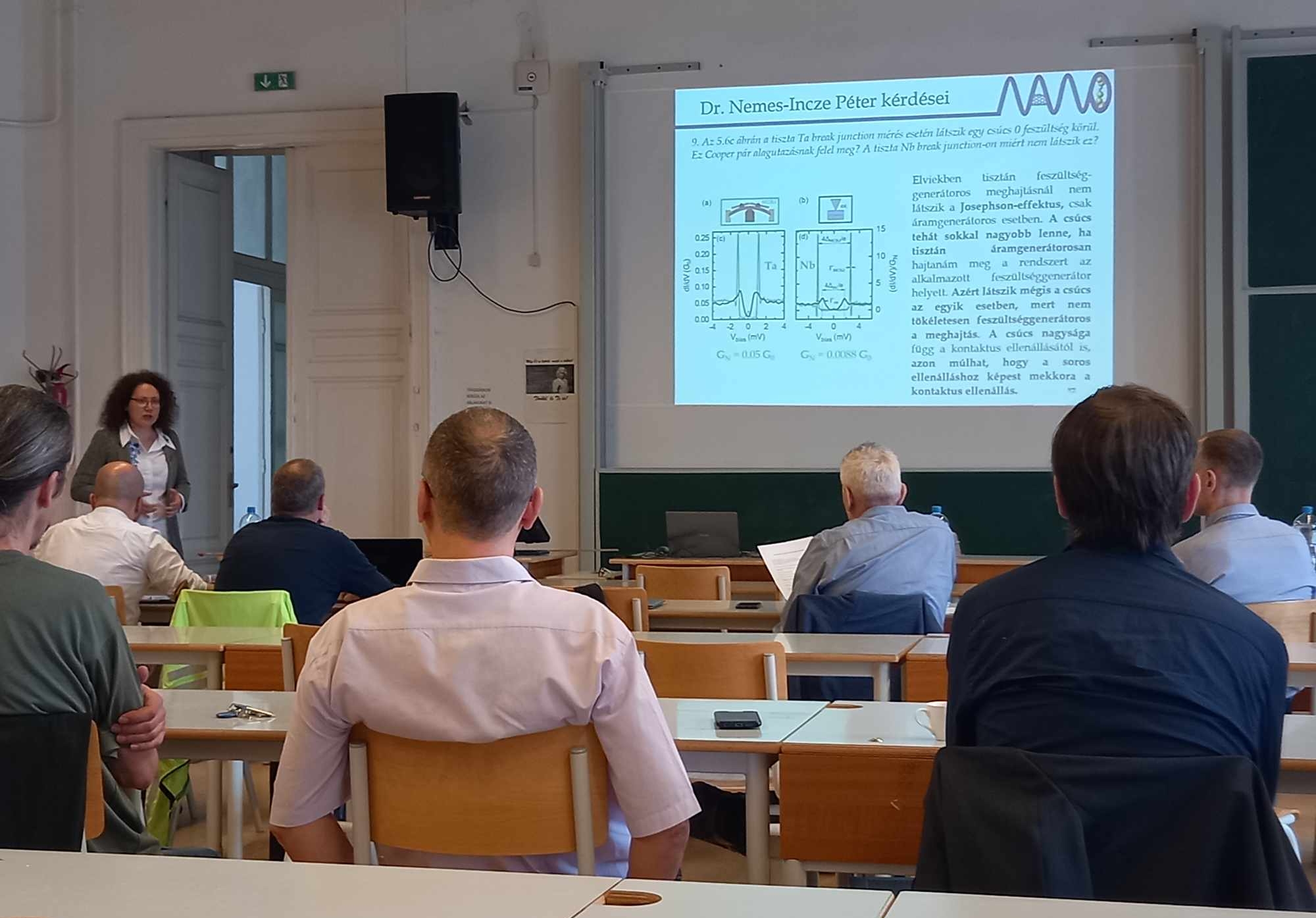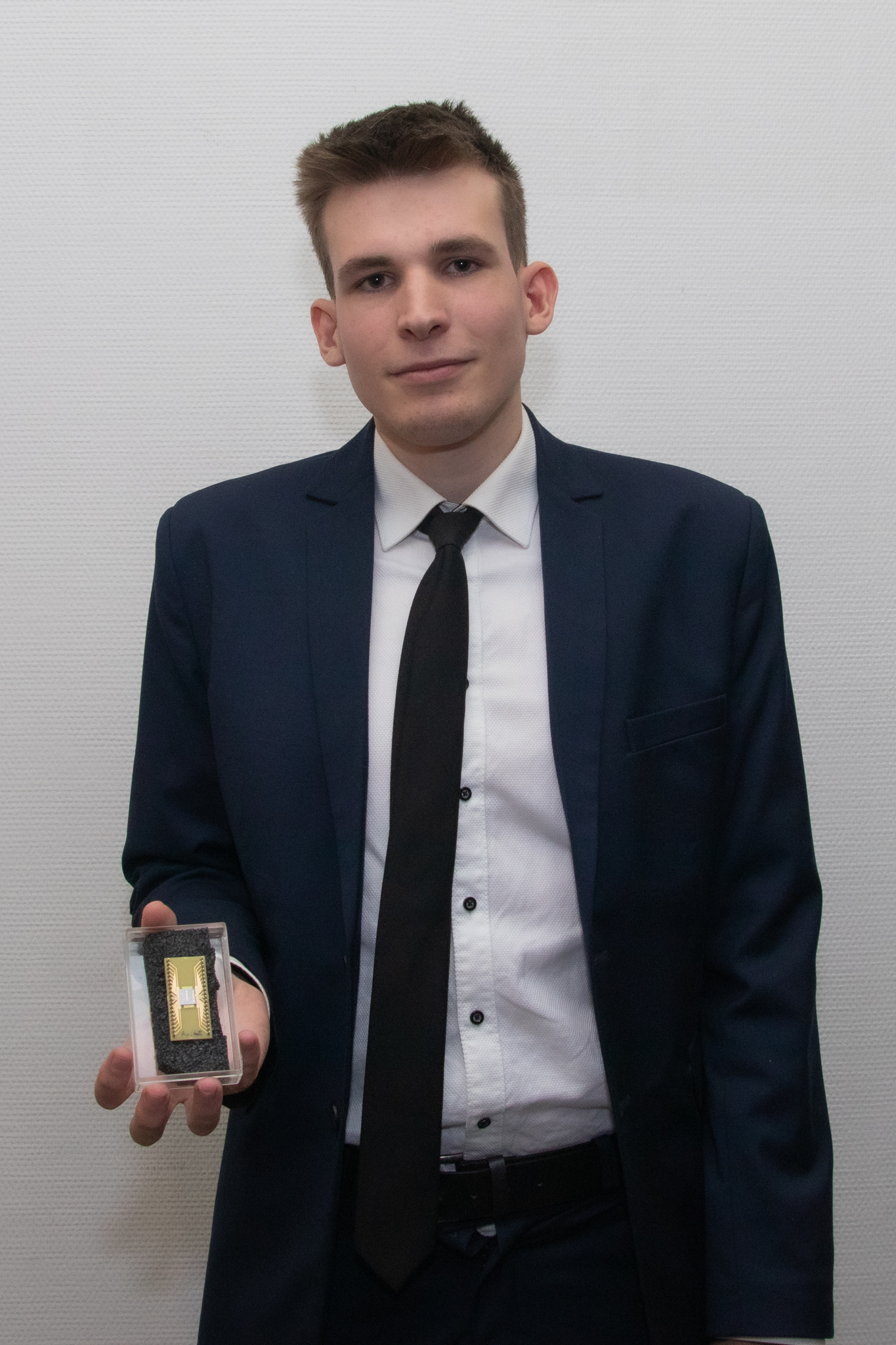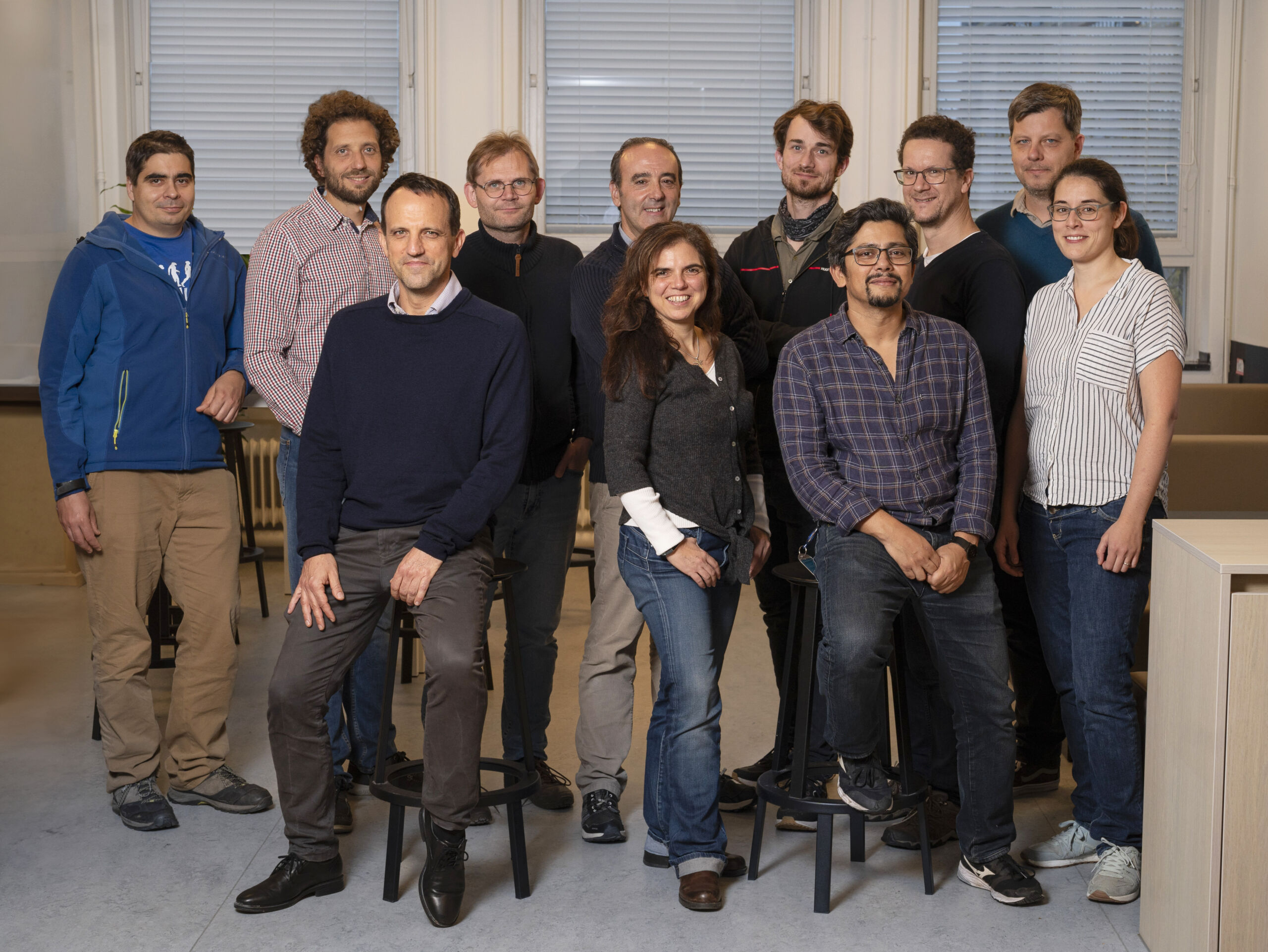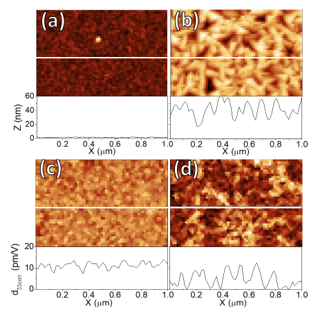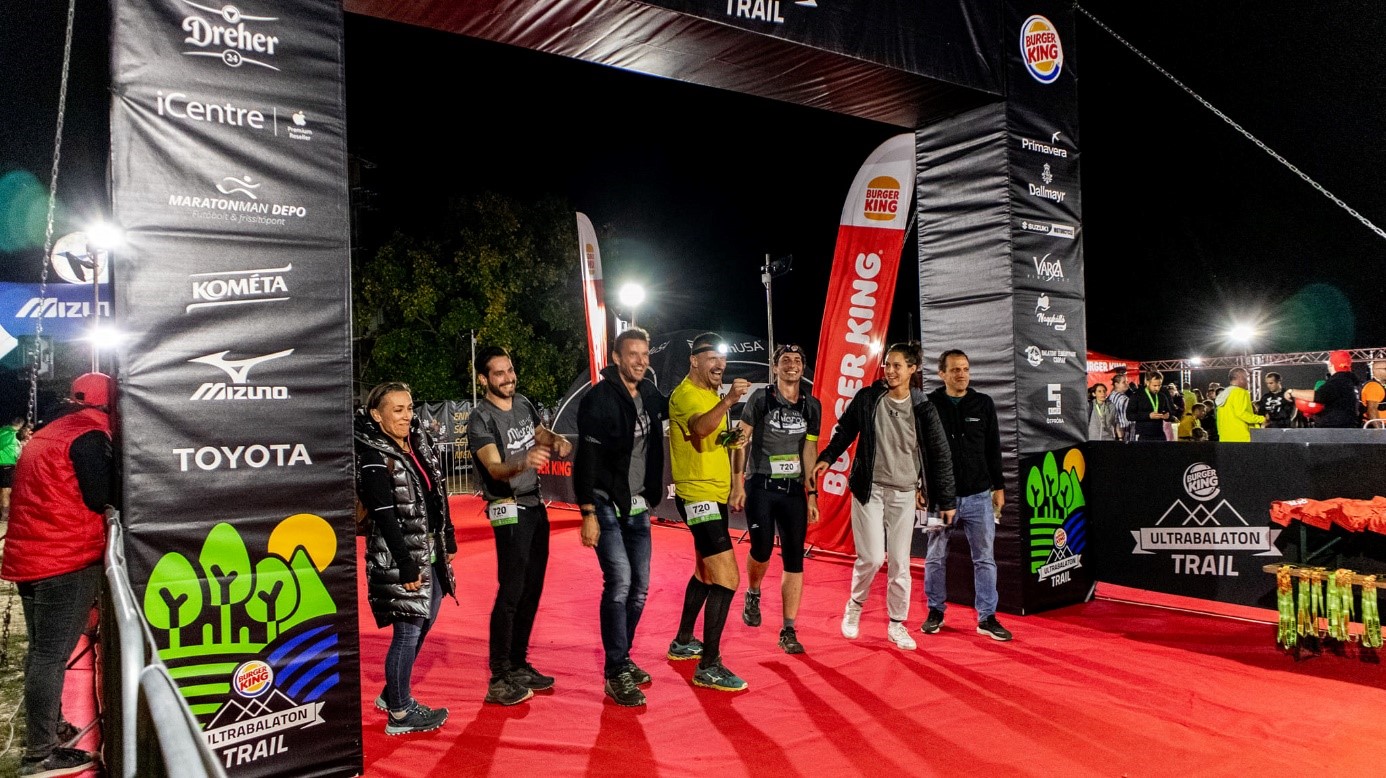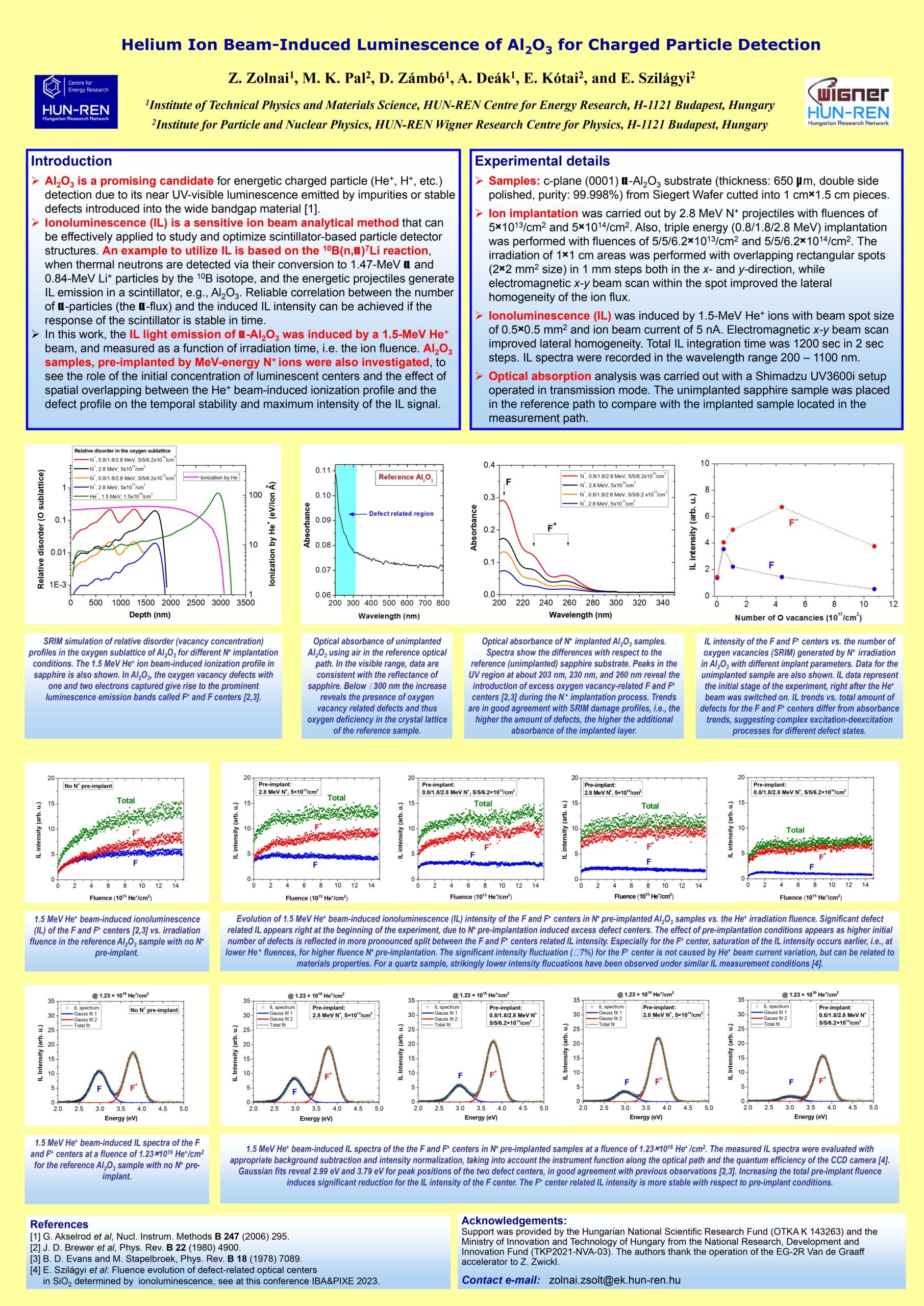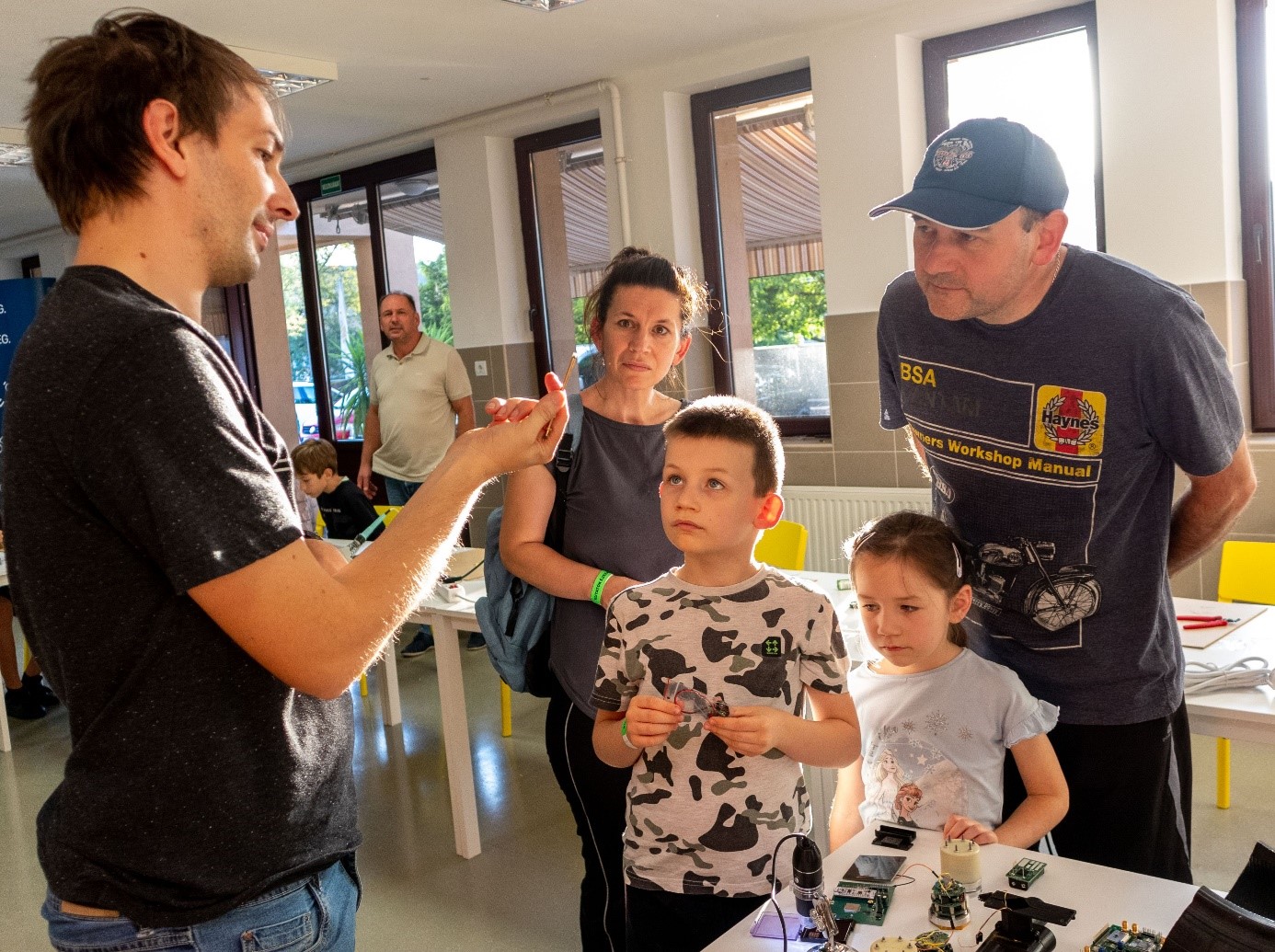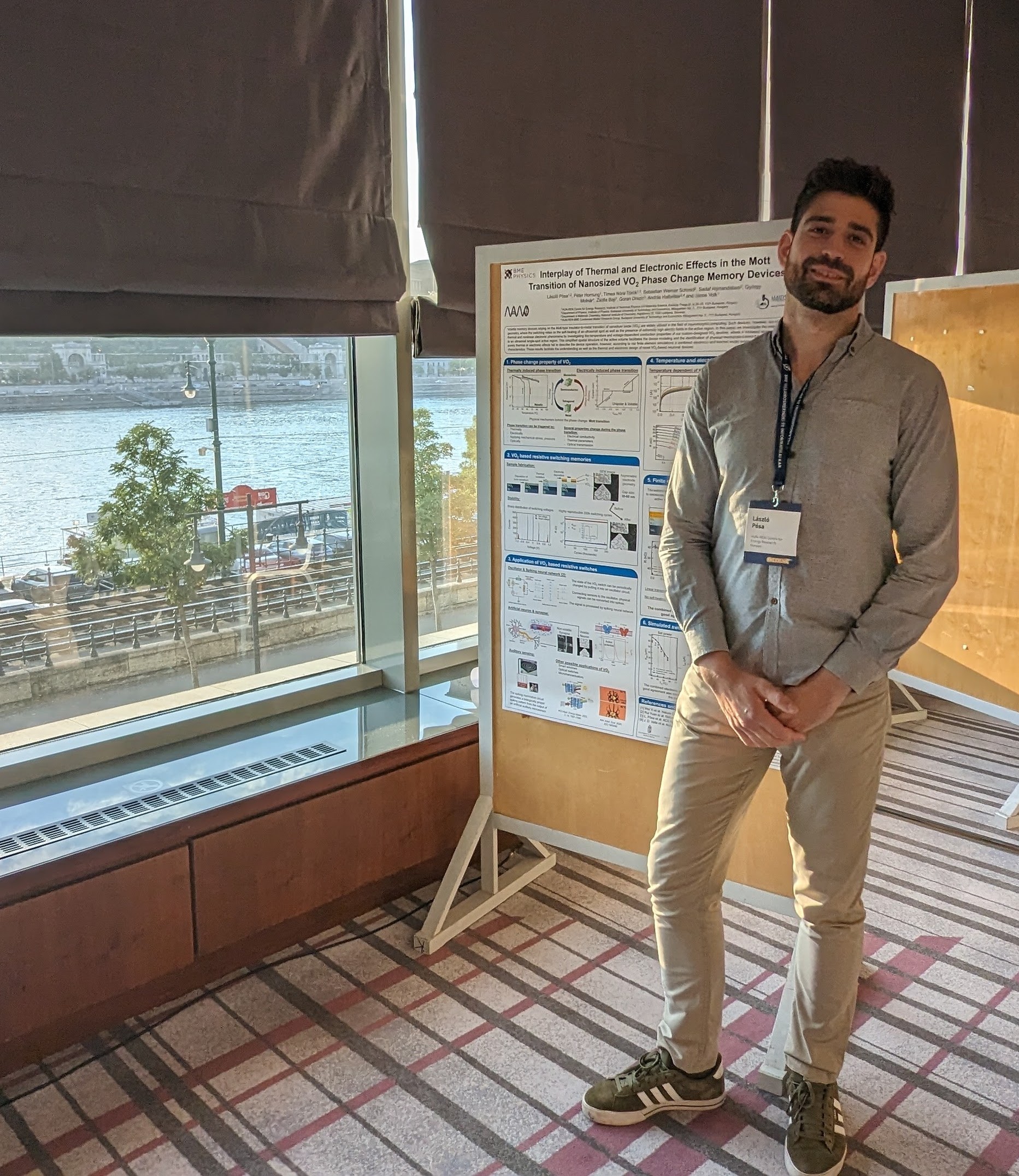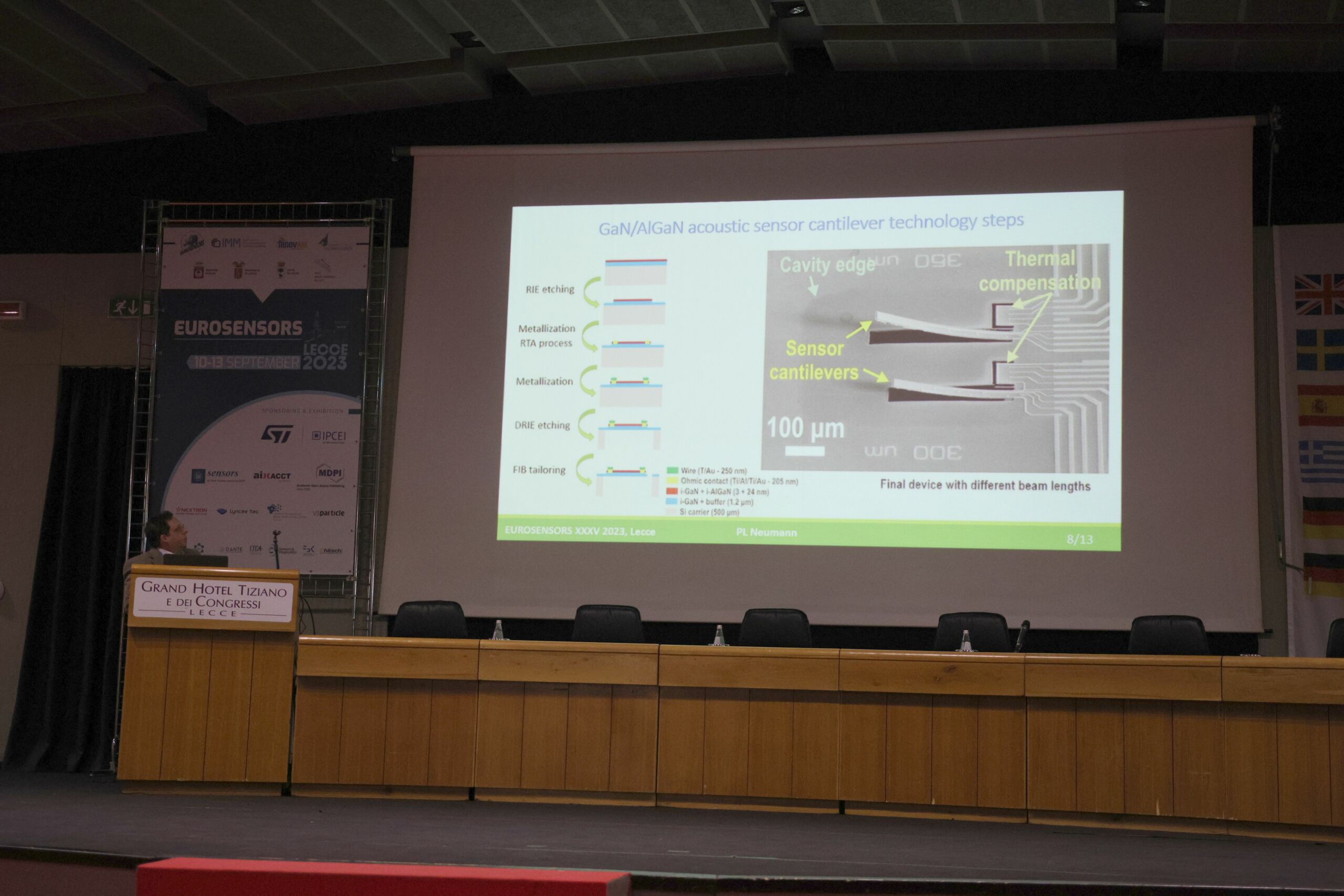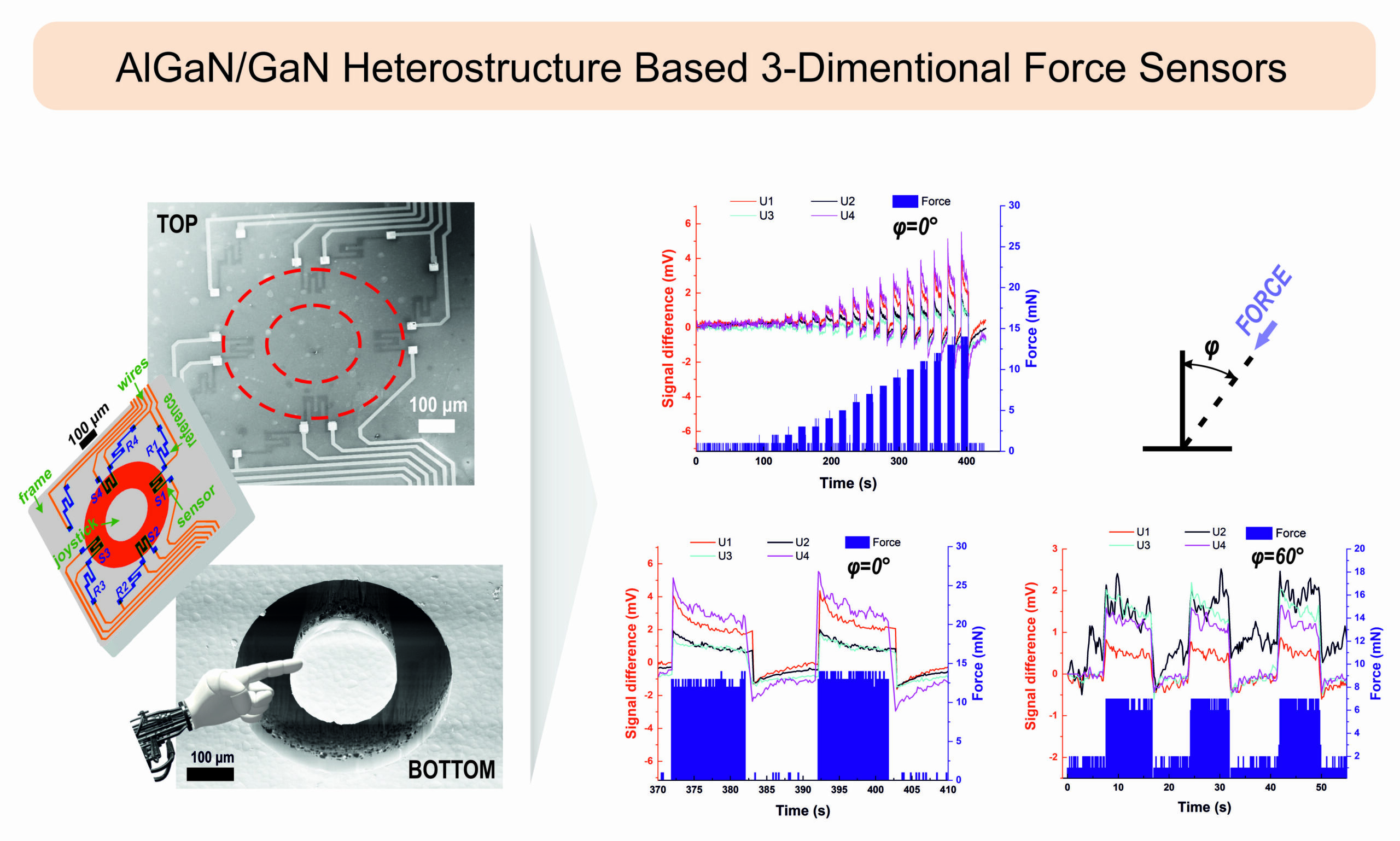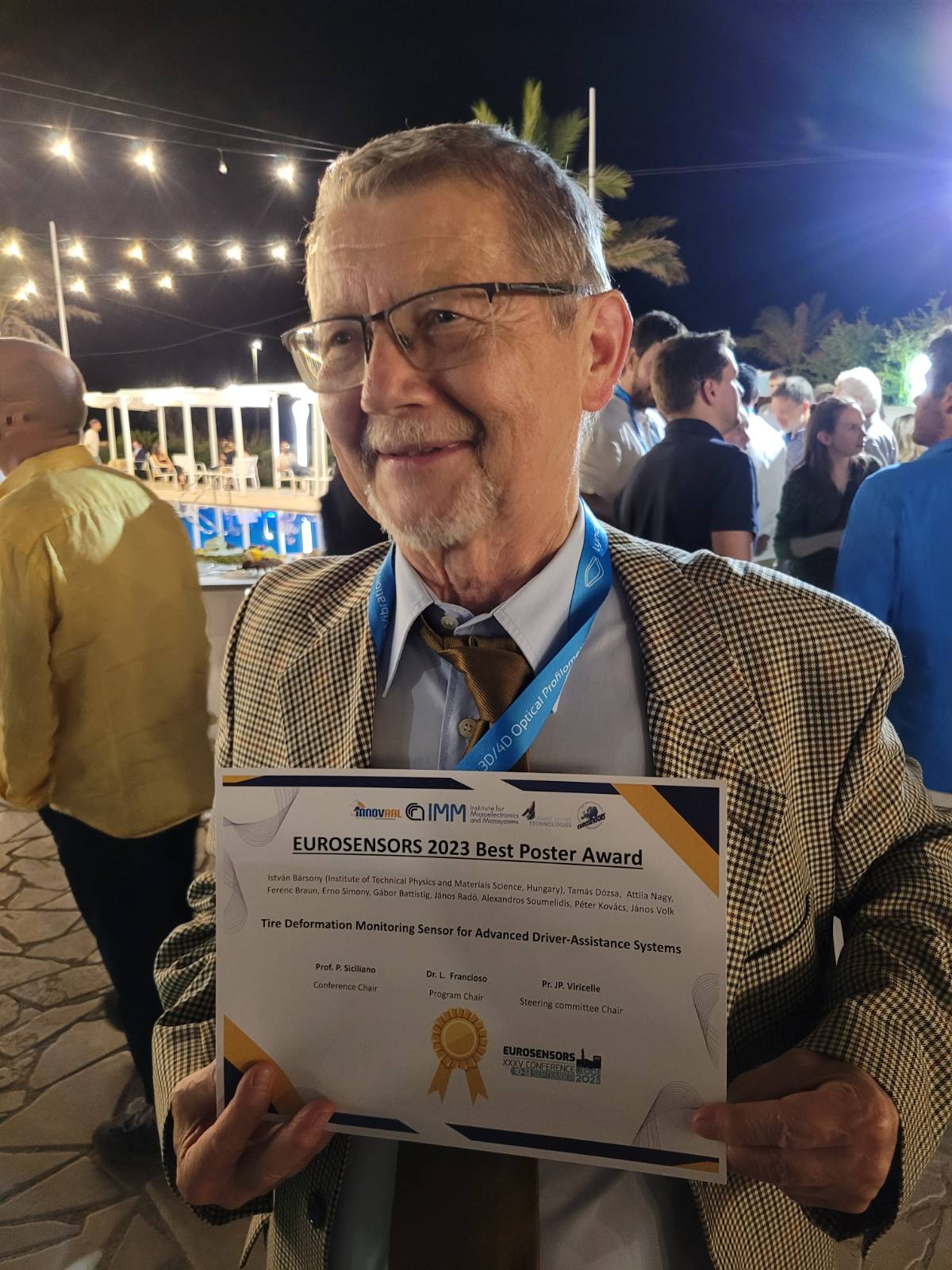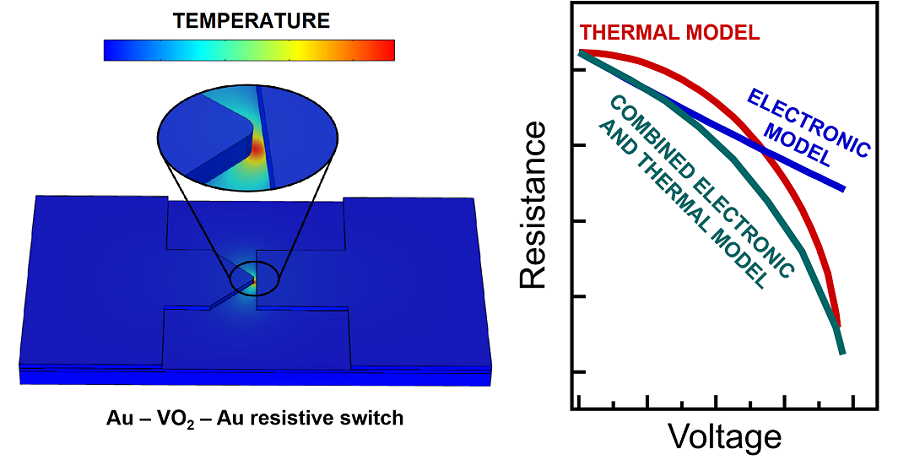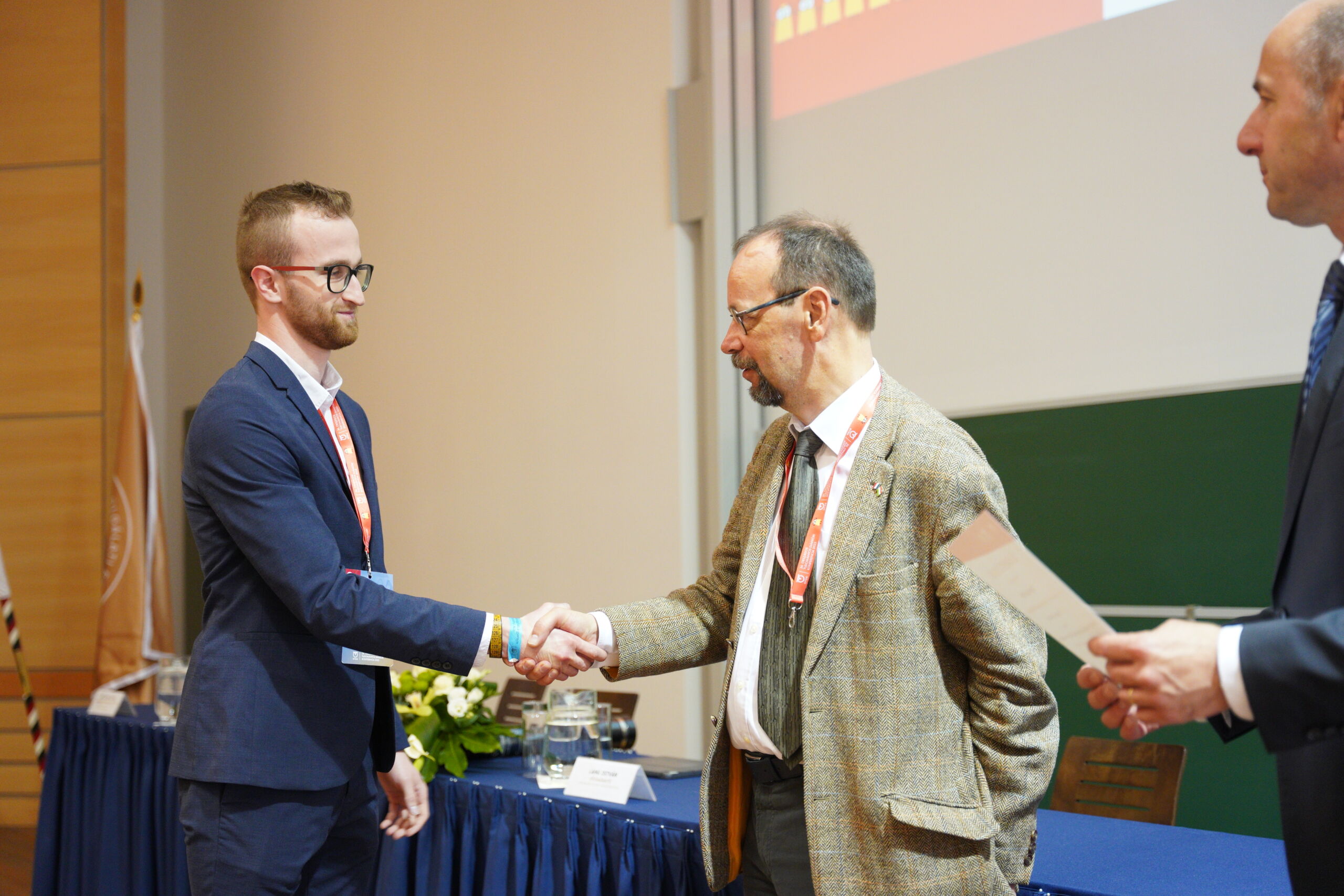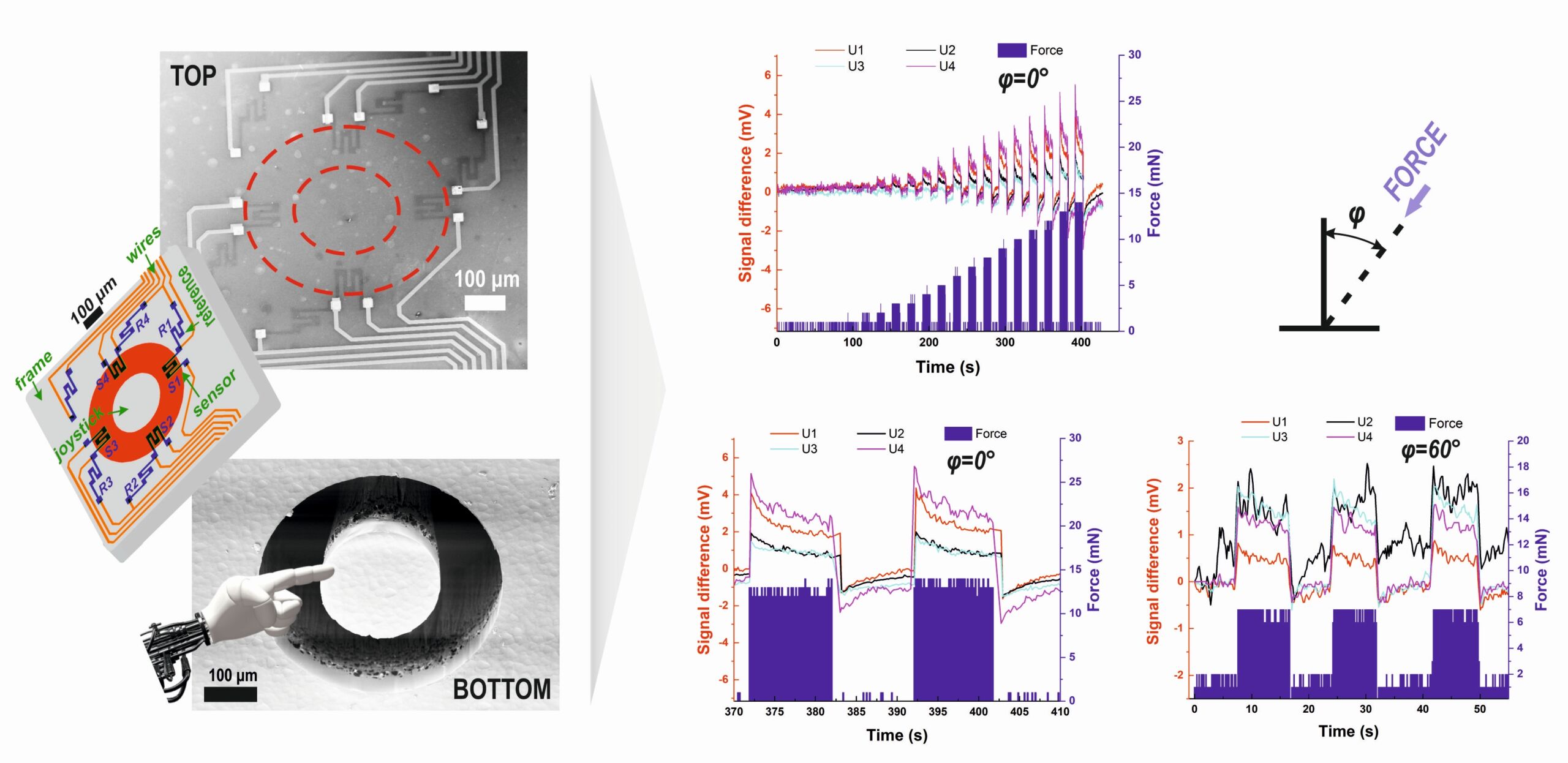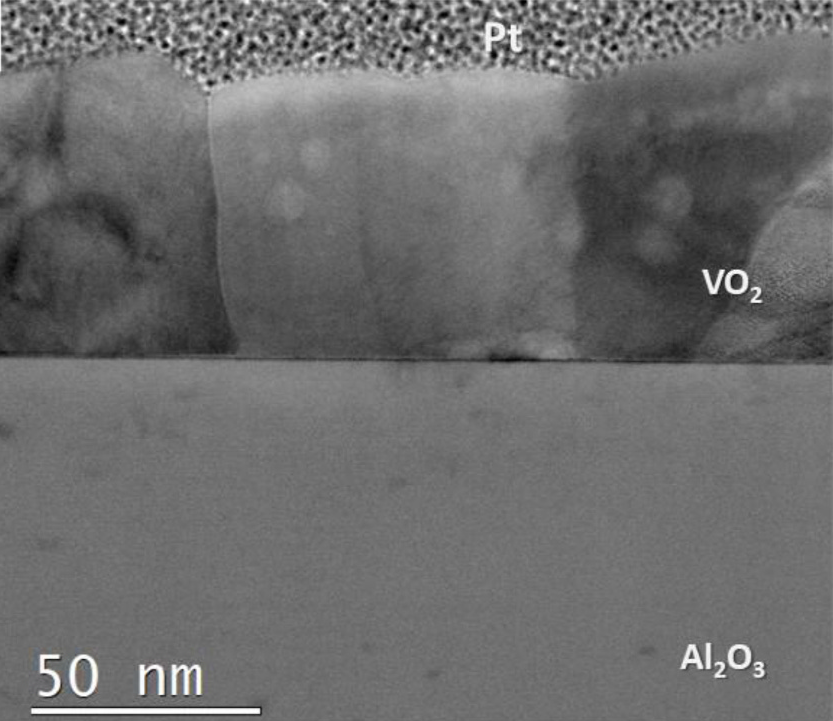Latest News
Poster presentation of Zsófia Baji at the AVS-ALD ALE 2025 Conference, Jeju, South Korea
Poster presentation by Zsófia Baji at the AVS-ALD ALE 2025 Conference, Jeju, South KoreaTitle: Vanadium sulfide layers with atomic layer depositionCo-authors: Zsófia Bérces, Zsolt Fogarassy, Zoltán Szabó, Zoltán Kovács, Konrád Kandrai, Péter Petrik, Péter Nemes-Incze, Péter Vancsó
Tímea Török has been awarded the János Bolyai Research Scholarship for a period of 3 years
Tímea Török has been awarded the János Bolyai Research Scholarship for a period of 3 years. Research project title: "Nanoscale memristors for neuromorphic and high-frequency applications"
Presentation of Tímea Török at the First Symposium on Physics and Chemistry for Unconventional Computing, AGH University of Krakow
Presentation of Tímea Török at the First Symposium on Physics and Chemistry for Unconventional Computing, AGH University of Krakow
János Volk Defends D.Sc. Thesis on ZnO Nanowires
April 4th, 2025; János Volk successfully defended his D.Sc. thesis, “Highly Ordered ZnO Nanowires,” at the Hungarian Academy of Sciences.
Z. Baji et al: Novel precursor for the preparation of vanadium sulfide layers with atomic layer deposition Editor’s PickLD
Z. Baji et al: Novel precursor for the preparation of vanadium sulfide layers with atomic layer deposition Editor's PickLD Zsófia Baj, Zsolt Fogarassy, Attila Sulyok, Zsolt Endre Horváth, Zoltán Szabó https://doi.org/10.1116/6.0004127
Z. Baji et al: Enhancing the nucleation in atomic layer deposition: A study on vanadium sulfide and oxide layers Available to Purchase Special Collection: Atomic Layer Deposition (ALD)
Z. Baji et al: Enhancing the nucleation in atomic layer deposition: A study on vanadium sulfide and oxide layers Available to Purchase Special Collection: Atomic Layer Deposition (ALD) Zsofia Baji, Zsolt Fogarassy, Orsolya Hakkel; Zoltán Szabó https://doi.org/10.1116/6.0004247
Presentation of Zsófia Baji on the Future Materials Conference 2024 in Athens, Greece
Future materials conference 2024, Athens, Greece: Nucleation and growth of atomic layer deposited vanadium sulphide layers, Zsófia Baji, Zsolt Fogarassy, Orsolya Hakkel, Zoltán Szabó
Team Gyorsítófeszültség: Accelerated into the Top 10
Four highly accelerated colleagues (Gyorsítófeszültség: Levi, Feri, Laci és Jani) conquered the 115 km UB Trail in just under 11 hours, earning 10th place in their category. In 2025, we’re raising the voltage even higher!
Successful PhD defense of Tímea Török
We are delighted to announce that our part-time staff member, Ms Tímea Nóra Török, has successfully defended her doctoral dissertation and was awarded the prestigious 'summa cum laude' degree. We are proud of her pioneering research in the Development and Investigation of Ultra-Small On-Chip Resistive Switching Memory Devices. Our sincere congratulations to her and supervisor, Prof András Halbritter at BME.
1st Prize on TDK
Our TDK student, J. Áron Vándorffy received 1st Prize on Students' Scientific Conference (TDK) of Budapest University of Technology and Economics. Title: Development of a 2DEG-based selective frequency sensing system Supervisors: Péter Lajos Neumann Section: Electronics devices and technologies Congratulations.
QuKit kick-off meeting in Delft
BME-MFA team participates the opening meeting of the EU Horizon Pathfinder Challenges project, Quantum Bits with Kitaev Transmons (QuKit) at TU Delft. The joint project of eight EU stakeholders aims to develop a novel qubit that is immune to most decoherence mechanisms currently limiting mainstream implementations of a quantum computer. This qubit, the Kitmon, is based on a hybrid between superconducting qubits and a two-dimensional platform.
N. Q. Khánh et al: Quantitative Piezoresponse Force Microscopy for thin AlScN films deposited by pulse DC reactive magnetron co-sputtering
https://doi.org/10.1016/j.mssp.2023.107902
We did it! MEMS&NEMS running on UBT
Success of the HUN-REN EC Microsystems and Nanosensors Laboratories Team at the ULTRABALATON TRAIL The ULTRABALATON TRAIL is a challenge that only the most determined runners will take on. Our team completed the 115 kilometre course in 12 hours 35 minutes. Success was the result of hard work, dedication and coordinated teamwork. Team members: Beiler Barbara Bereczki Dóra Braun Ferenc Fürjes Péter Illés Levente Szomor Zsombor Volk János Congratulations to the team, and thank you to everyone who contributed to this amazing success!
Poster presentation of Zsolt Zolnai on IBA&PIXE 2023
Poster presentation of Zsolt Zolnai on the 26th International Conference on Ion Beam Analysis – IBA-2023 and the 18th International Conference on Particle Induced X-ray Emission – PIXE-2023 (IBA&PIXE 2023) in Toyama, Japan, Title: Helium ion beam-induced luminescence of Al2O3 for charged particle detection https://ion-beam.jp/IBAPIXE2023/
Nanotech at the Researchers Night
Naturally the Nanosensors and BioMEMS labs were jointly present at the Researcher's Night event in Budapest. Nanotechnology is hard to demonstrate since it is normally confined to the laboratory it is being developed in. However our collegues presented all our latest advances in micro and nanotechnologies currently used in medical and scientific experiments of the MEMS and NEMS labs of the Centre for Energy Research.
Nanosensor Laboratory in Salgótarján
During the Researchers' Night, the HUN-REN Microsystems and Nanosensors Laboratory offered exciting interactive demonstrations and experiments to the participants. Visitors to Salgótarján also had the opportunity to see how microsystems and nanotechnologies work and how they are used in different areas of everyday life. Laboratory staff were also on hand during the event to answer visitors' questions and talk about the current and future potential of nanosensor technology. The aim of the event was to raise awareness of the exciting world of scientific research and to encourage young people to take an interest in scientific careers.
Poster presentation of László Pósa on Therminic 2023
Poster presentation of László Pósa on the 29th International Workshop on Thermal Investigation of ICs and Systems (Therminic 2023) in Budapest, Hungary Title: Interplay of Thermal and Electronic Effects in the Mott Transition of Nanosized VO2 Phase Change Memory Devices Link: https://therminic2023.eu/
P. L. Neuman et al: Frequency selective AlGaN/GaN cantilevers for human implantable acoustic sensors
https://doi.org/10.1016/j.mne.2023.100198
P. L. Neuman et al: Frequency Selective Algan/Gan Cantilevers for Human Implantable Acoustic Sensors
https://doi.org/10.1016/j.mne.2023.100198
Best poster award on Eurosensors ’23 in Lecce
Best poster award on Eurosensors '23 in Lecce Title: Tire Deformation Monitoring Sensor for Advanced Driver-Assistance Systems Authors: István Bársony, Tamás Dózsa, János Radó, Attila Nagy, Ferenc Braun, Ernő Simonyi, Gábor Battistig, Alexandros Soumelidis, Péter Kovács, János Volk Dátum: 2023 September 12 https://www.eurosensors2023.eu/ https://www.elte.hu/content/eurosensors-2023-best-poster-award-az-elte-informatikusainak.t.29104
L. Pósa et al: Interplay of Thermal and Electronic Effects in the Mott Transition of Nanosized VO2 Phase Change Memory Devices
https://doi.org/10.1021/acsanm.3c00150
2nd Prize on OTDK
Our TDK student, Péter Hornung received 2nd Prize on National Scientific Students' Associations Conference (OTDK). Title: Investigation of nanometer-sized VO2 phase change memory using finite element model. Supervisor: László Pósa Section: Materials science & testing 2 Congratulations.
P.L. Neumann et al.: AlGaN/GaN heterostructure based 3-dimensional force sensors
https://doi.org/10.1016/j.mne.2023.100198
1st Prize on TDK
Our TDK student, Péter Hornung received 1st Prize on Students' Scientific Conference (TDK) of Budapest University of Technology and Economics. Title: Investigation of nanometer-sized VO2 phase change memory using finite element model. Supervisors: László Pósa Section: Materials Science & Technology Congratulations.
Zs. Baji: VO2 layers with high resistive switching ratio by atomic layer deposition
https://doi.org/10.1016/j.mssp.2023.107483


